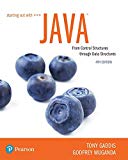
Concept explainers
This type of method cannot access any non-static member variables in its own class.
- a. instance
- b. void
- c. static
- d. non-static
Static methods cannot be accessed by any non-static member variable within a class
Hence, the correct answer is option “C”.
Explanation of Solution
Static method:
Static is an access modifier which cannot be accessed and is applicable on block, variable, methods, nested classes. Static keyword is added while declaring the block or variable or methods. A static member can be accessed before any objects of its class are created, and without even using the reference to any object.
Explanation for incorrect options:
a. Instance:
Instance variables are declared without the static keyword and are present outside any method declaration.
Hence, the option “A” is wrong.
b. Void:
Void describes the return type of the method, where void means the method has no return value.
Hence, the option “B” is wrong.
d. Non-static:
Non-static variables can be accessed by any member variable.
Hence, the option “D” is wrong.
Want to see more full solutions like this?
Chapter 8 Solutions
Starting Out with Java: From Control Structures through Data Structures (4th Edition) (What's New in Computer Science)
Additional Engineering Textbook Solutions
Concepts Of Programming Languages
Java How to Program, Early Objects (11th Edition) (Deitel: How to Program)
Computer Science: An Overview (13th Edition) (What's New in Computer Science)
Starting Out with Java: From Control Structures through Objects (7th Edition) (What's New in Computer Science)
SURVEY OF OPERATING SYSTEMS
Mechanics of Materials (10th Edition)
 Microsoft Visual C#Computer ScienceISBN:9781337102100Author:Joyce, Farrell.Publisher:Cengage Learning,Programming Logic & Design ComprehensiveComputer ScienceISBN:9781337669405Author:FARRELLPublisher:Cengage
Microsoft Visual C#Computer ScienceISBN:9781337102100Author:Joyce, Farrell.Publisher:Cengage Learning,Programming Logic & Design ComprehensiveComputer ScienceISBN:9781337669405Author:FARRELLPublisher:Cengage EBK JAVA PROGRAMMINGComputer ScienceISBN:9781337671385Author:FARRELLPublisher:CENGAGE LEARNING - CONSIGNMENT
EBK JAVA PROGRAMMINGComputer ScienceISBN:9781337671385Author:FARRELLPublisher:CENGAGE LEARNING - CONSIGNMENT C++ Programming: From Problem Analysis to Program...Computer ScienceISBN:9781337102087Author:D. S. MalikPublisher:Cengage Learning
C++ Programming: From Problem Analysis to Program...Computer ScienceISBN:9781337102087Author:D. S. MalikPublisher:Cengage Learning Systems ArchitectureComputer ScienceISBN:9781305080195Author:Stephen D. BurdPublisher:Cengage Learning
Systems ArchitectureComputer ScienceISBN:9781305080195Author:Stephen D. BurdPublisher:Cengage Learning Programming with Microsoft Visual Basic 2017Computer ScienceISBN:9781337102124Author:Diane ZakPublisher:Cengage Learning
Programming with Microsoft Visual Basic 2017Computer ScienceISBN:9781337102124Author:Diane ZakPublisher:Cengage Learning





